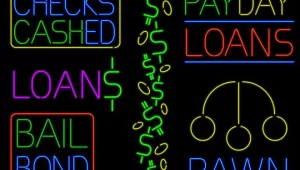
How Much Money is Traded Daily on Forex?
The foreign exchange market, or Forex, is the world’s largest financial market, characterised by its colossal daily trading volume. Trillions of dollars exchange hands in this market every day, making it a global economic powerhouse. In this blog post, we’ll delve into the fascinating world of forex trading and explore just how much money is traded daily on this bustling market. We’ll also examine the factors that influence this volume, the various instruments used for forex trading online, regional disparities in trading volume, and why forex trading in SA is considered safer through a forex trading platform.
The Daily Trading Volume in Forex
The foreign exchange (forex) market is the largest financial market in the world, with a daily trading volume of $6.6 trillion, according to the 2019 Triennial Central Bank Survey of FX and OTC derivatives markets. This is significantly larger than the daily trading volume of the stock market, which is around $100 billion.
The daily trading volume in forex can vary depending on a number of factors, including economic news releases, geopolitical events, and market sentiment. However, the overall trend has been for forex trading volume to increase over time. The most traded currency pair in the forex market is the US dollar/euro pair (EUR/USD). This is followed by the US dollar/Japanese yen pair (USD/JPY) and the US dollar/British pound pair (GBP/USD).
Factors Influencing Daily Trading Volume
There are a number of factors that can influence the daily trading volume in forex, including:
- Economic news releases: Major economic news releases, such as central bank interest rate decisions and GDP reports, can lead to increased volatility in the forex market and higher trading volumes.
- Geopolitical events: Geopolitical events, such as wars and natural disasters, can also lead to increased volatility and higher trading volumes in the forex market.
- Market sentiment: Market sentiment, which is the overall attitude of traders towards the forex market, can also influence trading volumes. If traders are bullish on the forex market, they are more likely to trade, which can lead to higher volumes.
Forex Trading Online Instruments
There are a number of different online trading instruments that traders can use to trade forex. The most common trading instruments are spot forex, forex forwards, and forex swaps.
- Spot forex: Spot forex is the buying and selling of currencies for immediate delivery. It is the most commonly used type of forex trading.
- Forex forwards: Forex forwards are contracts to buy or sell a currency at a predetermined price and on a predetermined date in the future.
- Forex swaps: Forex swaps are contracts to exchange two currencies at a predetermined exchange rate and on a predetermined date in the future.
Regional Differences in Trading Volume
The forex market is a global market, but there are some regional differences in trading volume. The most active forex trading regions are North America, Europe, and Asia.
- North America: North America is the most active forex trading region, accounting for around 40% of global trading volume. The main forex trading centres in North America are New York and Chicago.
- Europe: Europe is the second most active forex trading region, accounting for around 30% of global trading volume. The main forex trading centres in Europe are London and Frankfurt.
- Asia: Asia is the third most active forex trading region, accounting for around 20% of global trading volume. The main forex trading centres in Asia are Tokyo and Singapore.
Why Trading in SA is Safer Through a Forex Trading Platform?
There are a number of reasons why trading in South Africa is safer through a forex trading platform. First, trading platforms like Banxso – Online Trading Broekrage Platform are regulated by the Financial Services Board (FSB), which is the South African financial services regulator. This means that they must adhere to strict rules and regulations, which helps to protect traders from fraud and abuse.
Second, they offer a variety of features that can help traders to manage their risk more effectively. For example, platforms offer stop-loss orders and take-profit orders, which are orders that allow traders to close their trades at a predetermined price. This can help traders to limit their losses and protect their profits.
Finally, trading platforms offer a high degree of transparency. All trades are executed on transparent markets, and traders can see the prices at which their trades are executed in real-time. This helps to reduce the risk of fraud and manipulation.
Overall, trading in South Africa is safer through a trading platform because they are regulated, offer a variety of risk management features, and are transparent.


